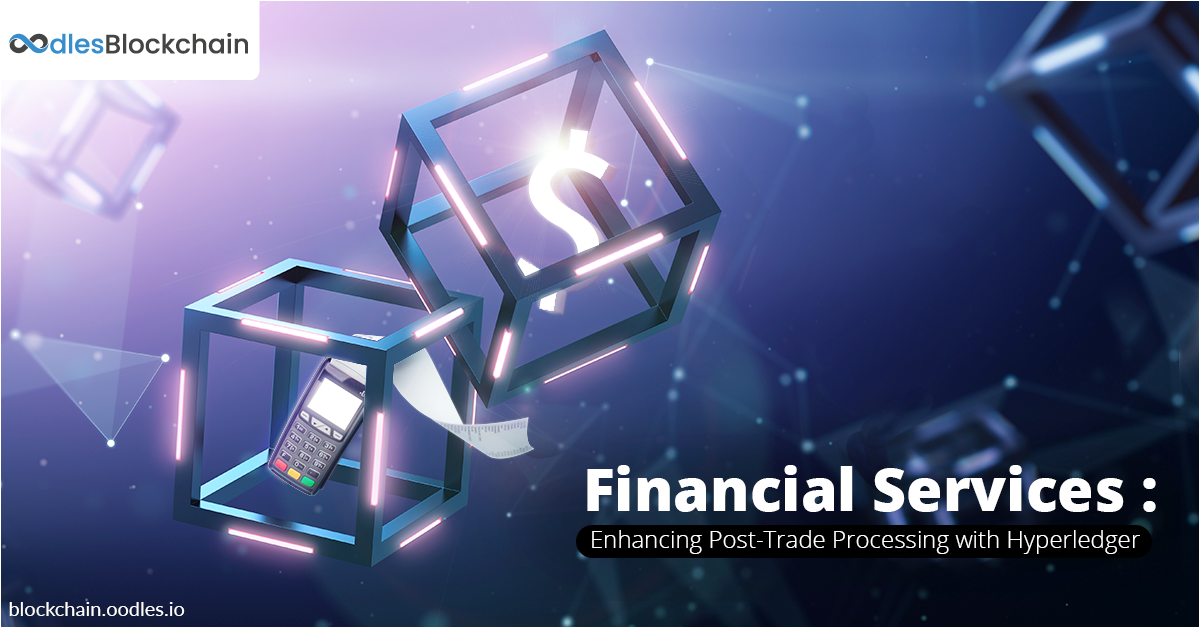-
Regulatory requirements like AML and KYC (Anti-money Laundering and Know Your Customer) oblige financial services providers to validate a customer's identity and provide clearance to conduct transactions. These obligations drive the adoption of private, permissioned blockchain applications, instead of public. Public blockchain solutions are not suitable where a user's privacy and confidentiality is of more importance. Along with speed and large transaction volumes, these are some of the reasons private blockchain applications are gaining traction in fintech. Today, we will look at how blockchain benefits financial services, especially post-trade processing in capital markets.
Post-Trade Processing Steps
Post-trade processing refers to all the activities involved after a trade completion, including transactions done at an exchange, or over-the-counter (OTC).
Here's a high-level view of the post-trade processing steps
Legal Trade Assurance: Validation and confirmation of the transaction after the trade execution. Clearance: Matching of the trade instructions and confirmation across different counterparties. Settlement: Legally achieving contractual obligations to finalize the transaction, including support processes like notifications to all participants affected by the transactions. Custodial Activities: Adjusting the positions that custodians have held on behalf of the counterparty. Reporting: Meeting all reporting needs for regulatory check and other internal risks, i.e. the contribution of the transaction to the market, and credit risk of counterparties.
Challenges with Post-Trade Processing
Currently, the steps mentioned above require to go through a fragmented flow that spreads across several departments and includes different entities like brokers, clearinghouses, exchanges, settlement agents, and so on. Typically, every trade requires to deal with numerous different interfaces, processes, and reconciliation efforts. For instance, two parties involved in a single transaction send individual settlement request to the trusted intermediary or the third party settlement agent. The agent matches data sets and instruction of both parties. If the agent identifies any mismatch, it triggers the prolonged reconciliation process, or may even declare it a failed trade. All this reconciliation work results in delays and inefficiencies in post-trade processing.
Blockchain as a Solution
In comparison to the traditional method, shifting post-trade processes on the blockchain can be far more beneficial and efficient. With the adoption of blockchain based peer-to-peer transaction model, one party can code transaction details for the counterparty for frictionless verification. Here, a blockchain network will work as a trusted third-party authenticator, facilitated by features like irrefutable and immutable transactions. Then, service providers can further reduce complexities as all information generated throughout the steps, and by participants, will reside on the blockchain. The information will be accessible on a need-to-know basis. Furthermore, it will eliminate reconciliation efforts, and the blockchain solutions will serve as the basis for regulatory and trade reporting. Eventually, service providers will be able to streamline all five steps listed above.
Finding Solution with Hyperledger Projects
Several projects enabled by Hyperledger provide features and functions for the efficient development of effective blockchain applications for post-trade processing.
Hyperledger Fabric
Service providers can deploy channels, supported by Fabric, as fully disjoint network for privacy and confidentiality. Channels enable a group of participants to produce a separate transaction ledger. It is beneficial for networks where participants don't want every transaction to be known to others in the network. So, if a group of participants creates a channel, only the permissioned users will have the ledger copies of the channel. It will limit data replication only to permissioned parties, and ensure data integrity and non-repudiation of transactions, without compromising data security. Also, service providers can satisfy external and internal reporting requirements by including a regulatory authority as members of the channel.
Hyperledger Sawtooth
Transaction families (referred to as a group of operations or transaction types being executed on the ledger) enabled by Sawtooth provide a powerful and reliable means to support post-trade processes. It facilitates building complex rules with a preferred language and revealing functions relevant to the context for safer smart contract execution. It also enables provision for preventing ad-hoc smart contract deployment, which further lower risks for financial institutions.
Hyperledger Indy
Indy provides unlinkable verifiable claims that financial services can report outstanding risk on a shared ledger while ensuring privacy. It still enables a regulatory authority to get a holistic view of the market and reduce potential market crashes. The feature also strengthens privacy measures, by enabling participants to control their network identities and information they want to disclose.
Concluding Thoughts: Post-Trade Processing with Blockchain
Fintech blockchain applications are gaining momentum in financial services. Simplifying post-trade processing is only one of the many use cases of the technology. However, one blockchain platform may not be able to prove the panacea. We need to bring the best out of different blockchains to develop effective financial solutions. At Oodles, we provide Hyperledger blockchain applications to develop applications for a variety of industries. They range from digital identity solutions, banking, real estate, healthcare, and much more.

Our Offices
INDIA
Emaar Digital Greens, Sector 61,
Gurugram, Haryana
122011.
Welldone Tech Park,
Sector 48, Sohna road,
Gurugram, Haryana
122018.














